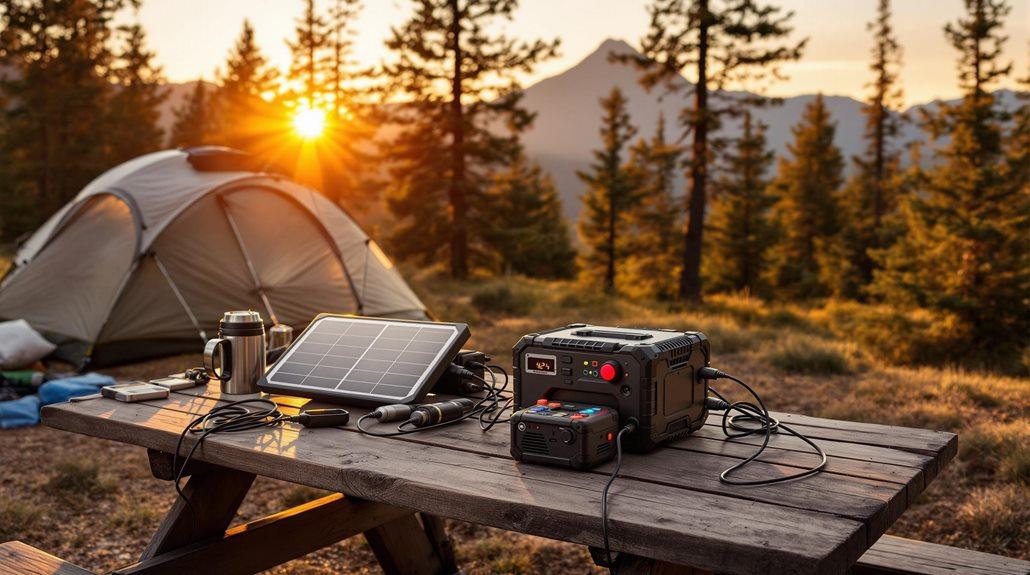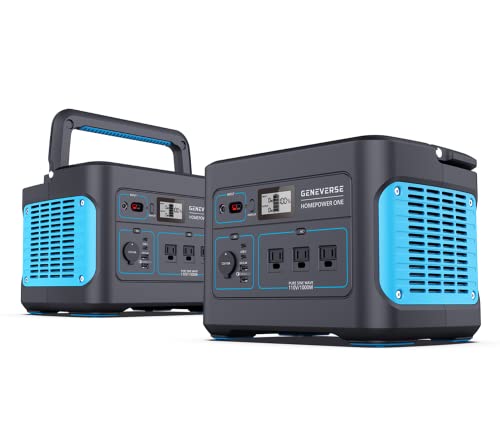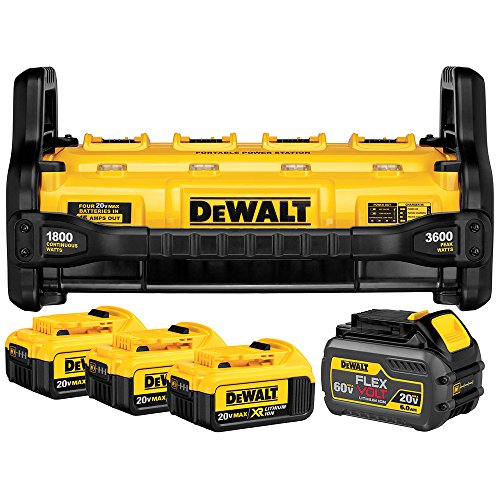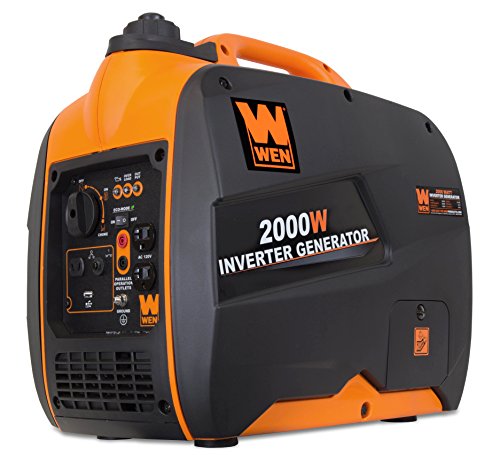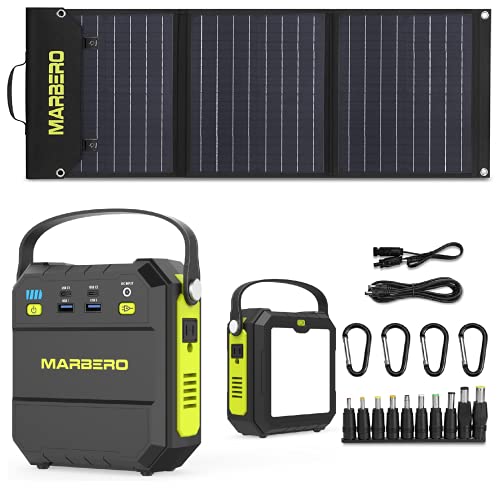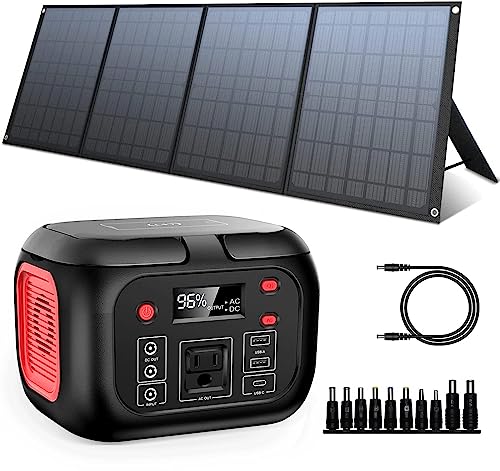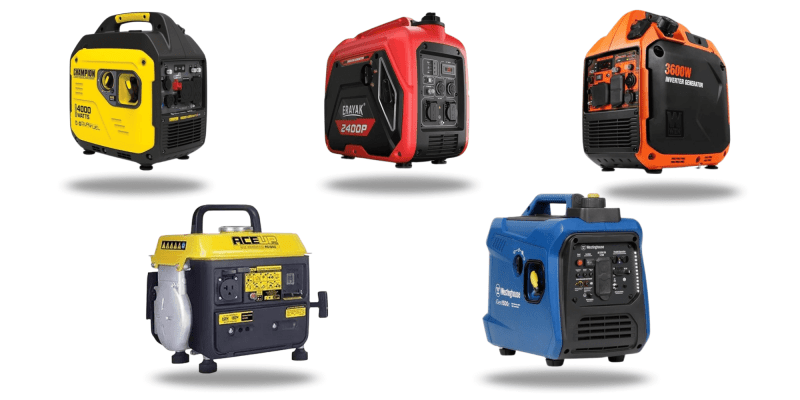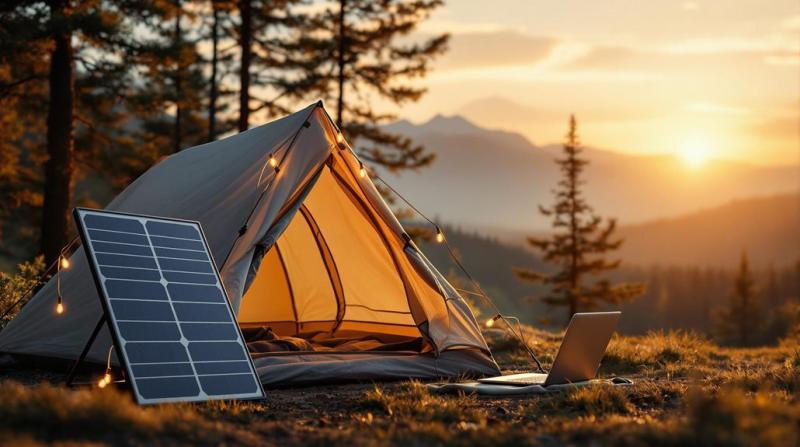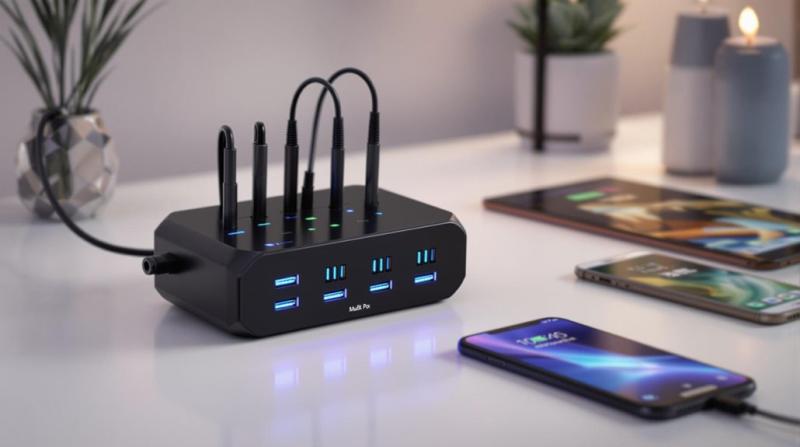For camping adventures, you'll find several top-performing portable solar generators that deliver reliable power. The Jackery Explorer 2000 Plus leads the pack with 2,000W output, while the BougeRV Flash300 offers excellent portability at 600W. The Anker SOLIX F2000 excels for RV use, and the rugged Bluetti AC60 withstands tough outdoor conditions. These units feature lithium iron phosphate batteries lasting 2,000-3,500 cycles, multiple charging ports, and weather resistance ratings of IP54 or higher. When choosing your generator, focus on battery capacity (500-2,000Wh), weight (10-45 pounds), and charging options. Our detailed comparison reveals how each model meets specific camping needs.
Key Takeaways
- Jackery Explorer 2000 Plus leads the market with 2,000W output and extensive battery capacity for extended camping power needs.
- Portable camping generators typically offer 6-8 charging ports including USB-A, USB-C, AC, and 12V DC outputs for device versatility.
- LiFePO4 battery technology provides 2,000-3,500 charge cycles and maintains 80% capacity throughout the generator's lifespan.
- Weather-resistant designs with IP54 ratings protect against outdoor elements while providing reliable power in temperatures from -4°F to 140°F.
- Most camping generators can power essential devices like smartphones (5-10W), laptops (15-20 hours), and small refrigerators (50-70W/hour).
Essential Features for Camping Power
Successful camping trips increasingly depend on reliable power sources, and portable solar generators have become essential gear for outdoor enthusiasts. When selecting the right portable power stations for your outdoor adventures, you'll need to focus on several pivotal features that guarantee peak performance and convenience. Top-rated generators like Jackery and Goal Zero consistently earn 4.5+ star ratings from outdoor enthusiasts for their reliability and durability.
Battery capacity stands as a primary consideration, with effective solar power solutions requiring 500-1000 watts to support your devices. The lightweight design of modern generators, typically ranging from 15-30 pounds, makes transportation manageable while setting up camp. For reliable performance, look for units featuring lithium iron phosphate batteries, which deliver 500-2,000 charge cycles and superior charging efficiency compared to standard options.
Your generator should include multiple charging ports to accommodate various devices simultaneously, with 6-8 outlets covering USB-A, USB-C, AC, and 12V connections. Durability remains critical for camping trips, so choose models with robust construction that can handle temperature variations from -4°F to 140°F. The power output must remain stable through solar panel charging, guaranteeing consistent energy delivery for your smartphones, tablets, lights, and small appliances throughout your outdoor experience.
Top Generator Models Compared
Leading the portable solar generator market, five standout models have emerged as top choices for campers in 2024. The Jackery Explorer 2000 Plus stands at the forefront with its impressive 2,000W power output and expandable battery capacity, making it ideal for extended camping trips. With its high surge capacity of up to 6000W, it easily handles demanding power needs for multiple devices simultaneously. You'll find the BougeRV Flash300 perfectly suited for lighter needs, offering rapid charging capabilities and 600 watts of reliable portable power station performance.
For RV enthusiasts and overlanders, the Anker SOLIX F2000 delivers exceptional versatility with its multiple charging ports and substantial battery capacity. The Bluetti AC60's rugged design specifically caters to outdoor adventures, while its compact size guarantees you won't struggle with transportation. If you're watching your budget, the EcoFlow Delta 2 Max provides excellent value without compromising on essential features.
Each model supports solar charging, though their capabilities vary. The Jackery Explorer 2000 Plus offers the most all-encompassing solar charging options, while the BougeRV Flash300 emphasizes quick charging times. Your choice should ultimately depend on your specific camping power needs, considering factors like duration, power requirements, and portability preferences.
4.26 out of 5 stars2 Geneverse 1002Wh Portable Power Stations with 8 Outlets
Power up your adventures with the ultimate portable power solution from Geneverse
Product information
Product Review Score
Product links
Power Capacity and Runtime
Understanding power capacity and runtime helps you make the most of your portable solar generator investment. Most camping solar generators offer between 500-2,000 watt-hours of battery capacity, which you'll need to match with your power requirements. For maximum efficiency, consider that inverter energy losses typically range from 10-15% during power conversion. When you're planning your camping trip, consider that a 1,000Wh power output can sustain a laptop for 15-20 hours of use.
Your portable power needs will vary based on the devices you're charging and the appliances you're running. A typical setup might include smartphones drawing 5-10W, tablets using 10-15W, and a small refrigerator consuming 50-70W per hour. High-performance solar generators, equipped with advanced lithium battery technology, can keep your camping refrigerator running for up to 30 hours on a single charge. For prime device charging and consistent appliance power, look for models using lithium iron phosphate (LiFePO4) batteries, as they provide more reliable output than standard lithium-ion options. You'll find that most generators can handle multiple devices simultaneously, making them versatile companions for extended outdoor stays.
Solar Panel Charging Efficiency
For paramount performance of your portable solar generator, charging efficiency plays a pivotal role in maintaining reliable power during your camping adventures. Understanding solar panel efficiency, which typically ranges from 75-95%, will help you maximize your power generation potential in the outdoors. High-capacity storage with integrated solar charging guarantees extended runtime and energy independence during your trips.
Your panel wattage directly impacts charging speed, and you'll want to verify your setup includes 400-800W of solar panels for peak battery replenishment. Modern units equipped with MPPT technology optimize maximum solar input by automatically adjusting power conversion rates, considerably improving overall efficiency. To achieve the best results, follow the 1:5 charging ratio - for instance, a 400W solar panel setup can effectively charge a 2,000Wh battery within 4-6 hours of peak sunlight.
Keep in mind that weather conditions will affect your solar charging capabilities. Cloud cover can reduce efficiency by up to 60%, so it's crucial to plan accordingly. Position your solar panels in direct sunlight whenever possible, and adjust their angle throughout the day to maintain peak exposure. This practice guarantees you're maximizing power generation and maintaining consistent charging speeds for your portable generator.
Weather Protection and Durability
A solar generator's durability and weather protection capabilities determine its reliability in unpredictable outdoor conditions. When you're searching for a camping-ready power station, you'll want to focus on models featuring weather resistant and water resistant designs, with IP54 or higher ratings that protect against dust and water spray. Models like scratch-resistant power stations incorporate rugged components and protective covers for enhanced durability in rough terrain.
Leading manufacturers construct their portable generators using rugged design elements, combining durable ABS plastic with reinforced aluminum frame components. You'll find that high-end models incorporate sophisticated temperature regulation systems, automatically adjusting their performance to handle extreme weather conditions from sub-zero to scorching temperatures. The shock-absorbing features help protect your investment when you're traversing rough terrain or accidentally bump the unit during setup.
Inside these generators, sealed gaskets and moisture-resistant barriers safeguard critical electronic components from environmental damage. These protective measures guarantee your power station continues functioning reliably, even when exposed to challenging weather conditions. When selecting your camping generator, look for models that emphasize these durability features, as they'll provide the best protection for your outdoor power needs while maintaining consistent performance in various weather scenarios.
$990.00
4.43 out of 5 starsDEWALT FLEXVOLT Power Station with Charger (4 Batteries)
The Ultimate Solution for Power Outages and Outdoor Adventures: DEWALT FLEXVOLT Portable Power Station with Charger and 4 Batteries
Product information
Product Review Score
Product links
Portability and Weight Considerations
While durability protects your investment, the weight and portability of your solar generator will substantially impact your camping experience. When choosing a portable solar generator, you'll need to contemplate how you'll transport it and where you'll use it. The Jackery Explorer 1000, at 22 pounds, offers an excellent balance of power capacity and manageability for most camping scenarios.
For backpacking and minimalist camping, you'll want to focus on lightweight options under 20 pounds, such as the BougeRV Flash300 at approximately 10 pounds. If you're planning car camping or RV trips, you can comfortably opt for heavier models between 30-45 pounds, which typically offer greater power capacity. Most modern solar generators come equipped with practical transportation features like integrated handles, telescoping designs, or wheels to enhance mobility.
Today's manufacturers are making significant strides in lightweight design, producing solar generators that deliver impressive power capacity without excessive weight. When selecting your generator, contemplate your specific camping style and needs, as the right balance between weight and power will guarantee you're not struggling with unnecessary bulk during your outdoor adventures.
Battery Technology Performance
Battery technology's rapid evolution has revolutionized portable solar generators, with LiFePO4 chemistry leading the charge in camping applications. When you're choosing a solar generator, you'll find that LiFePO4 (lithium iron phosphate) batteries offer exceptional durability, delivering 2,000-3,000 charge cycles compared to traditional lithium-ion's 500-800 cycles.
Your solar generator's battery management system plays a pivotal role in maintaining ideal performance. Modern units come equipped with thorough protection features, including overcharge prevention and short-circuit protection, while temperature management systems guarantee your battery operates efficiently between 32°F and 113°F. You'll typically find battery capacities ranging from 240Wh to 2,048Wh, with mid-range models offering 1,000-1,500Wh - plenty of power for multiple devices during your camping trips.
The most impressive aspect of current LiFePO4 technology is its longevity, as these batteries maintain 80% capacity even after 3,500 charge cycles. This extended lifespan means you won't need to replace your solar generator's battery as frequently, making it a more cost-effective and reliable choice for your outdoor adventures.
Off-Grid Power Applications
Modern off-grid power applications demand robust and versatile solar generators that can sustain your essential camping needs. When you're planning extended stays in remote locations, you'll need a portable power solution with a battery capacity between 1,000 and 2,000 watt-hours to reliably run your camping electronics and small appliances.
The Jackery Explorer 2000 Plus represents the latest in portable power technology, featuring advanced LiFePO4 battery chemistry that performs consistently across varying temperatures. You'll find that efficient solar charging ratios, typically maintaining a 1:5 relationship between solar panel wattage and battery capacity, guarantee steady power generation throughout your outdoor adventures. For instance, a 400W solar panel setup effectively charges a 2,000Wh station.
Today's solar generators come with multiple charging options, including wireless charging capabilities and expandable battery configurations that let you customize your power setup. When selecting your off-grid power solution, look for lightweight designs with integrated handles and foldable solar panels. These features make it easier to transport your power station to remote camping locations while guaranteeing you've got reliable, renewable energy whenever you need it.
Equipment Compatibility Guide
Camping's diverse power needs require careful matching between your solar generator and equipment specifications. Modern camping solar generators come equipped with multiple charging ports that can handle various devices charged simultaneously, from smartphones to small appliances running at your campsite. You'll find USB ports, including both USB-A and USB-C options, alongside AC and 12V DC outlets that support your essential gear.
When selecting a power bank for your outdoor adventures, consider the charging options available and your equipment's power requirements. Most camping solar generators can efficiently handle devices needing 51Wh to 67 watts per hour, making them ideal for laptop charging and running small refrigerators. Today's lightweight models, like the Bluetti AC60, offer fast charging capabilities that'll get you from empty to full in under 90 minutes. For peak battery life and performance, look for units with LiFePO4 chemistry, which performs reliably in temperatures from -4°F to 140°F. Your solar panel setup should match your generator's specifications to confirm efficient power generation, supporting multiple charging ports for extended off-grid use of your camping equipment.
Frequently Asked Questions
What Size Solar Generator Do I Need for Camping?
Want to keep your devices charged while enjoying the great outdoors? You'll need to match your power needs to the right camping capacity. For weekend trips, choose a compact battery between 250-600Wh for recreational charging of phones and camp lights. If you're planning longer adventures or need tent electricity for appliances, opt for a 1,000Wh unit. Calculate your outdoor wattage requirements by adding up your devices' power consumption before selecting your campsite energy solution.
Is It Worth Buying a Portable Solar Generator?
If you're looking for reliable outdoor power, a portable solar generator is definitely worth the investment. You'll get clean, renewable camping energy without the noise and fumes of gas generators. For your solar adventure, these mobile power solutions offer convenient nature charging through solar panels or wall outlets. While the upfront cost is higher, the wilderness electricity benefits, minimal maintenance, and versatile off-grid tech capabilities make it a smart choice for expedition electricity needs.
Is Bluetti or Jackery Better?
Just like choosing between two reliable cars, your choice between Bluetti and Jackery depends on your specific needs. If you're prioritizing battery capacity and durability, Bluetti's higher power output and longer lifecycle make it your best bet. However, if you value portability and cost-effectiveness, Jackery's lighter design and lower price range might suit you better. Both brands offer solid warranty coverage and excellent customer reviews, but Jackery edges out in brand reputation and outdoor performance.
Which Is Better, Jackery or Ecoflow?
When comparing these popular off-grid tech options, you'll find that both have distinct advantages. Jackery excels in outdoor survival with superior durability and longer battery life, making it ideal for serious camping essentials. However, EcoFlow's portable energy solutions offer faster charging and better value. For your wilderness tech needs, choose Jackery if you're prioritizing rugged adventure gear and expandability, or EcoFlow if you want quicker rechargeable options at a lower price point.
